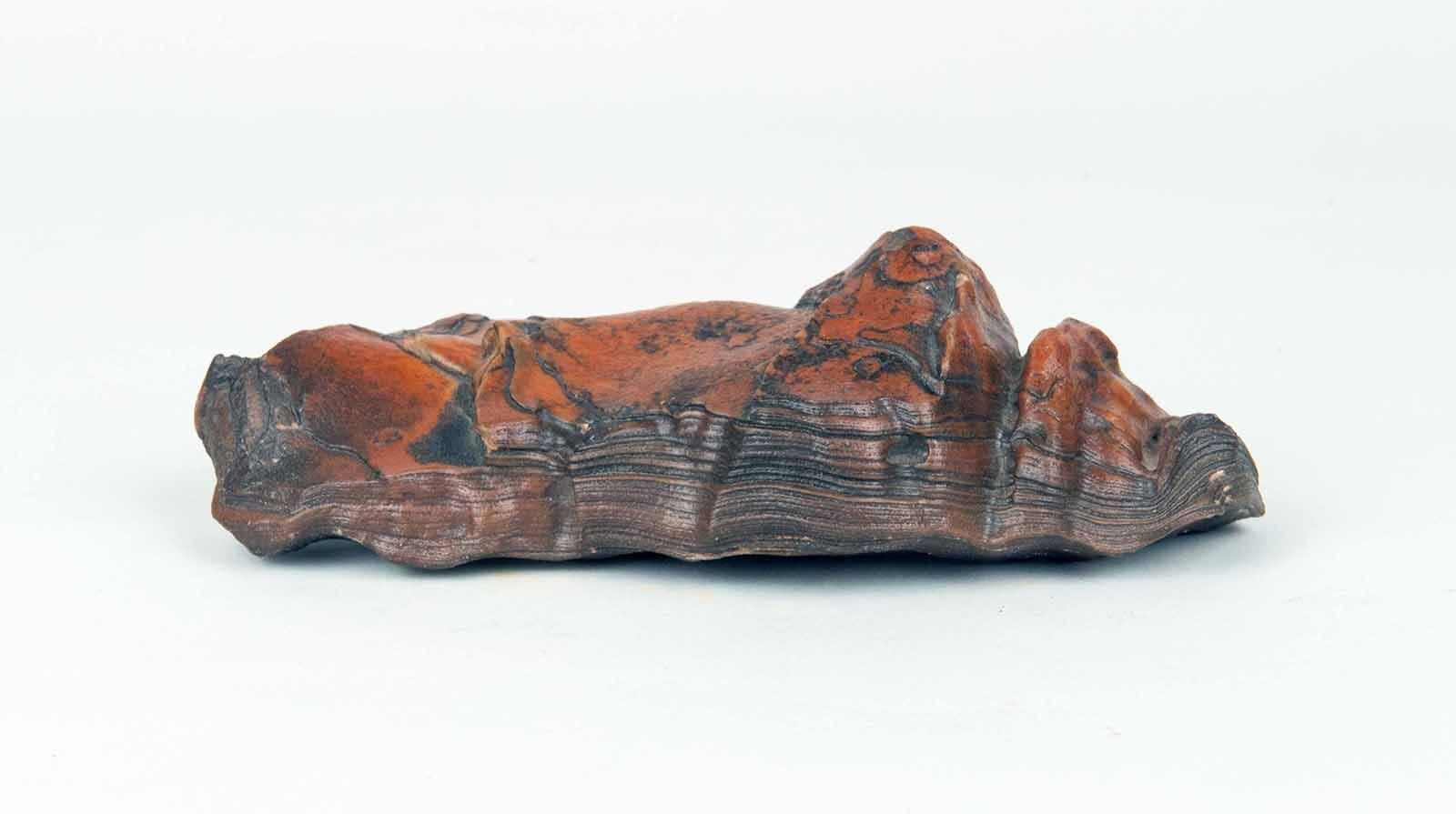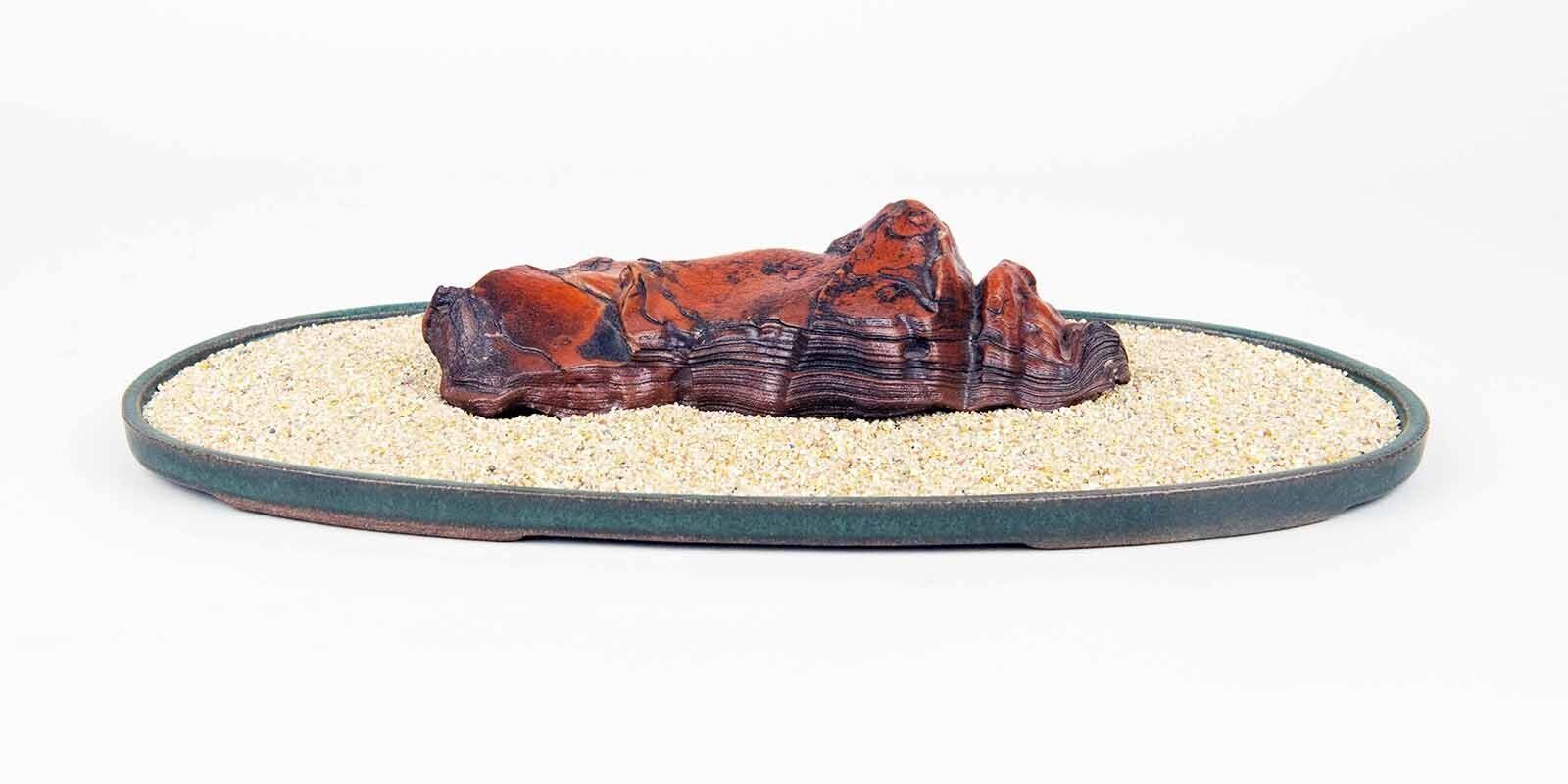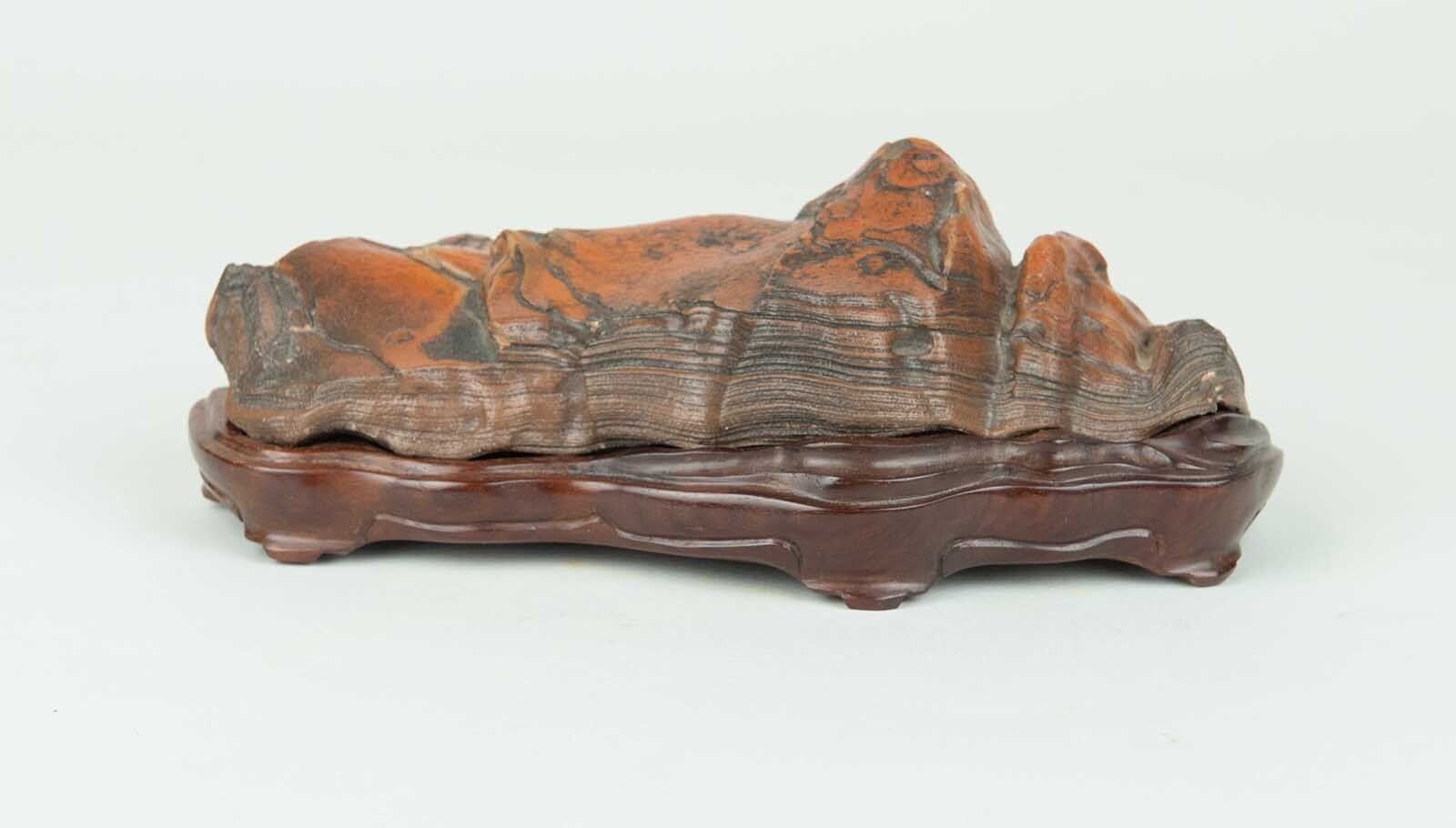Stone + Context = Art
A discussion of when a stone becomes an object of art
By Richard Turner, August, 2022
The "art" of the viewing stone is in the viewing, or more to the point, in shaping how the stone will be viewed. The undiscovered stone is not a work of art. It may be a thing of beauty and joy forever, but it is not (yet) art. It becomes a work of art when the action of a conscious mind somehow alters its natural state. The mere designation and (re) location of the stone constitutes a modification of the object because it changes our perception of its status, its life, and utility. In other words, the act of designating a stone as a "viewing stone" is the first and perhaps the most significant modification one can make. The relocation of a stone from its natural habitat confirms the original designation and changes the status of the found object from an ordinary stone to
a viewing stone that invites close examination and perhaps contemplation, and in some cases, even veneration.

Displaying the stone in a traditional tray filled with sand, on a carved wooden base, or in a more innovative mode is the next commitment to changing perceptions of the stone. Here the modification is more apparent. Matching the sand and the tray to the stone in a fashion that complements the color, texture, and form of the stone; placing the stone in the tray so that it dynamically articulates the negative space implied by the tray; these decisions are made to present the stone in its most favorable light. They evidence a desire to "bring out the best in the stone" and to control the viewer's perception of it. They are directly analogous to the kinds of decisions that a painter might make as he or she distributes colors or shapes around a canvas to lead the viewer's eye to the composition’s focal point.

The same can be said of the decisions surrounding the fabrication of a permanent base for the stone. Which face is the front? What is the most flattering angle for display? What type of base is most suitable for a particular stone? We can look to long-established traditions to answer these questions or choose to respond to the stone intuitively. In either case, we are consciously shaping perceptions of the stone, our own and those of others.

The life of a viewing stone includes being moved from place to place, being transferred from hand to hand, being watered, oiled, and perhaps cut; having fitted stands and satin-lined containers constructed for it, being exhibited, talked about, and written about, and, above all, being protected from the elements that would be shaping stones left undiscovered in stream beds, caves, and lakes, or buried deep in the earth.
The utility of a viewing stone differs dramatically from that of an ordinary stone. It can become an object of contemplation and even veneration. It can inspire poetry and appreciative prose. It can function as a portal to the natural world or simply as a decorative object. It can also become a commodity sold for profit or given as a gift.
Let's think for a bit about the "work" in the term “work of art.” You, the artist, the collector, or the connoisseur are the ones doing the work. You are the one who is shaping perceptions of the stone by your discovery and collection of the stone and by your decisions with regard to its display and exhibition. How you present your stone, where you exhibit your stone, and how you talk or write about your stone are all a part of this process. Unless you cut, water, oil, or otherwise modify the stone, it remains as it was when you found it. Of course, you clean the stone before displaying it, but the object itself endures essentially unchanged regarding its physical properties. What changes is its context, and you are the creator of that. That is what the work in the work of art is, the creation of an appropriate context for the stone. The stone, by itself, is not a work of art. A work of art is a conscious creation. A stone is a random act of geological forces. The concept of art is the invention of human beings.
Conventional paintings and sculptures are recognizable as works of art, in part because they cannot be mistaken for anything else. A painting can be on the wall of a museum, over a couch in someone's living room, or on the front lawn in a yard sale, but its identity as a painting remains intact. A stone removed from its stand and returned to the streambed does not remain a work of art. It may be a “former work of art,” and it may once again become a work of art if it is rediscovered and displayed, but in its original context, it is once again a stone.

